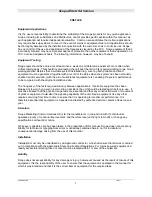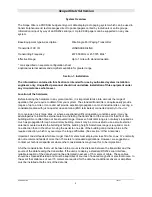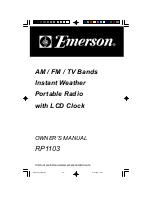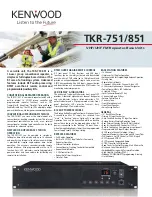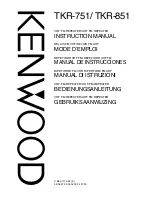
Scope Xlite USA Version
XliteUSA 01/00
Issue 1
9
Other Antennas
The range and performance of this equipment can be improved by the addition of more efficient
antennas*. Aerial efficiency and choice of aerial location will have far more effect on range and
signaling integrity than deploying a power amplifier. These can be installed either inside or
outside the building and are connected to the transmitter with 50 OHM coaxial cable.
Glass mount antenna (UHFGM): for installation on the inside of a suitable window. This can boost
range, especially if it is required in one direction from the building.
The center fed half wave dipole, measuring approximately 12 inches from tip to tip, will provide
excellent all round local signaling. This can be mounted either inside or outside a building. Two
versions are available:
1) a light duty antenna suitable for sheltered environments/internal installation (LUHFDP).
2) a heavy duty stainless unit with optional mounting hardware for more arduous applications
(UHFDP).
Other antennas, including collinear, are available for external applications. Consult your dealer for
further details.
Pre-terminated coaxial feeder cables are available for 5, 10 or 15 meter requirements.
Note ! High frequencies can equate to high power losses. Always use quality cable. RG58 is only
acceptable on cable runs of up to 5 meters. We recommend RG213, or equivalent, on greater
lengths. If in doubt consult your dealer.
*subject to license conditions. Specifically, mounting height and Effective Radiated Power (ERP)
.
Consult your dealer before changing antenna type.
Service Information
If you experience a problem with your equipment, please contact the distributor from whom it was
purchased. In any event, ensure you have the systems details at hand for reference purposes.
Record your system details here for quick reference:-
Date supplied____/____/____
Supplied by (dealer):____________________________
*Serial Number: ___ ___ ___ ___ ___ ___ ___
* 7 digit number located on the rear chassis plate of the Xlite unit (see Diagram 1)
Transmitter frequency __ __ __
.
__ __ __MHz FCC ID No: JRNUSASERILINK
System base ID number__________________
Serial port configuration
________________
(e.g. 8,N,1)
Serial port protocol____________________
(e.g. SCOPE, COMP1, COMP2, TAP)
Alphanumeric Pager Ranges: from______________ to ______________
For information on individual pager types, refer to the appropriate pager manual



